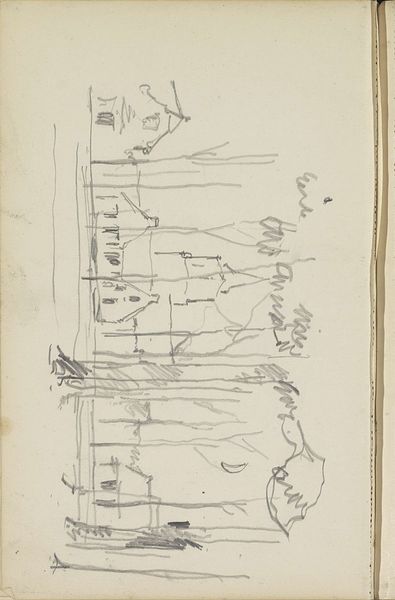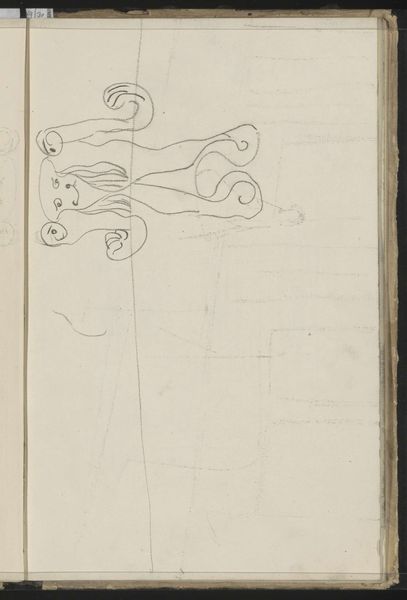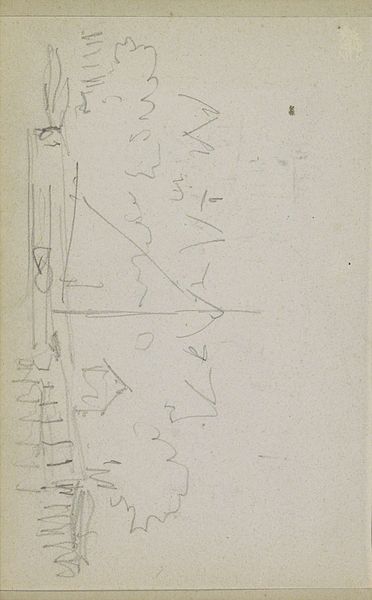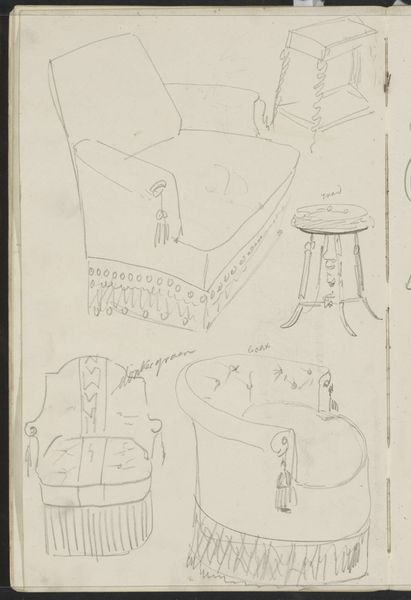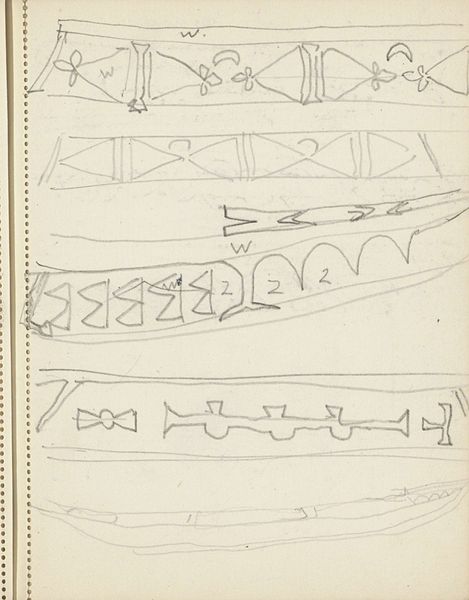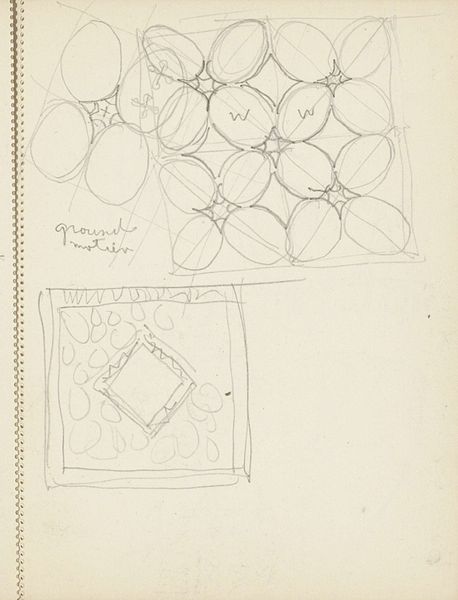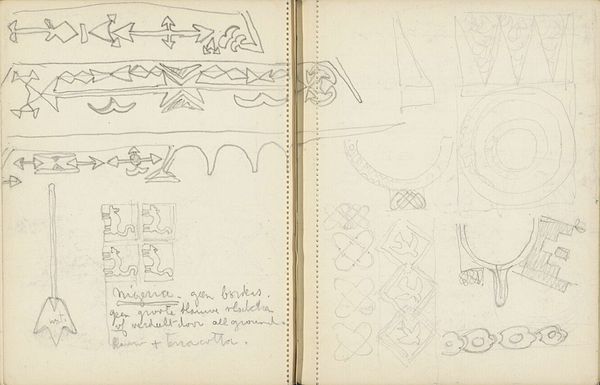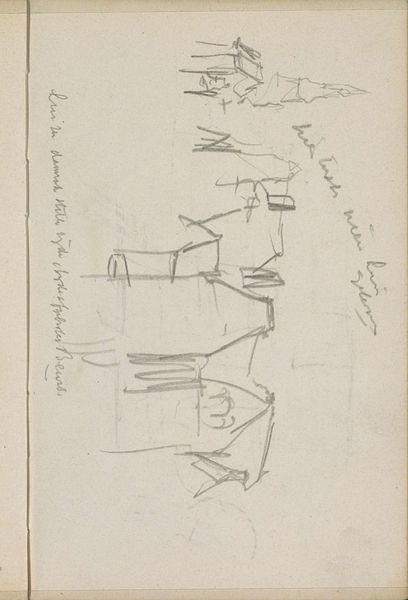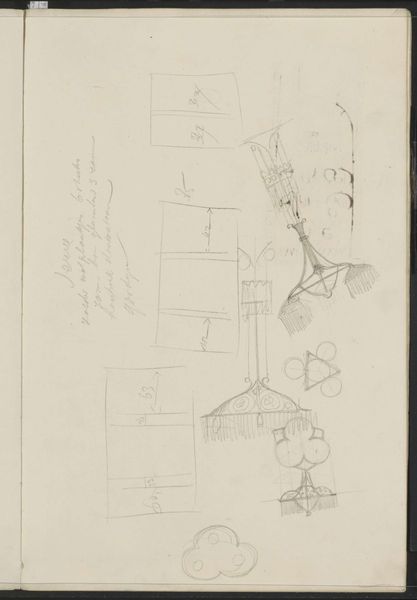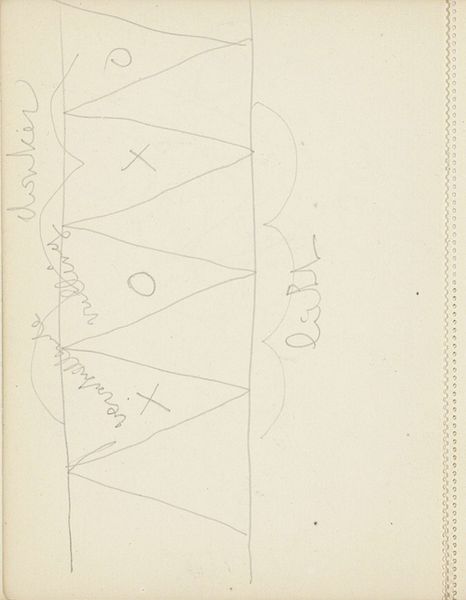
Copyright: Rijks Museum: Open Domain
Curator: Welcome. We're looking at "Decoratieve patronen, onder andere met bloemen," or "Decorative Patterns, Including with Flowers" created by Reijer Stolk, likely sometime between 1916 and 1945. It's currently held here at the Rijksmuseum, and it appears to be a pencil and ink drawing. Editor: My first thought? Fleeting. Like catching someone mid-thought, doodling during a meeting...a rather lovely meeting, that is. There's a whimsical energy to it. Curator: Indeed. The sketch is intriguing. It exists as a process, not necessarily a product, and that makes it so compelling. The support itself—paper from a sketchbook, still bound on the left side—speaks to a utilitarian approach to artmaking. These are patterns conceived for broader application. Editor: I see those geometric shapes striving for form, almost becoming floral motifs. Do you think the looseness, that barely-there quality of the pencil, helps the imagination jump in and complete the picture? Curator: Precisely. These patterns are in conversation with the lineage of Art Nouveau, where organic forms merge with geometric abstraction, and these sketches, the material residue of a designer's activity, suggest considerations for everything from textiles to wallpaper. Editor: There's an interesting juxtaposition here too, between the rough sketches and the idea of ‘decorative’ refinement. The visible pentimenti show that the work is the exploration of how things can become more resolved with form, without yet realizing. Curator: Right. This page provides insight into a designer's labour; it presents the intellectual and manual activity which would precede a finished commercial artwork. How fascinating that the museum preserves this early moment in the artistic process. Editor: And something about this work's intimate scale and provisional nature pulls me in. It's almost like stumbling upon a secret, witnessing the artist’s most vulnerable thought, before they’ve fully decided what to make of it. Curator: Stolk provides an engaging demonstration of both thought and design in the context of early 20th-century artistic practices. A perfect intersection between art and everyday life through craft! Editor: Ultimately, it is an unmediated image offering a look into the foundation of creativity!
Comments
No comments
Be the first to comment and join the conversation on the ultimate creative platform.

